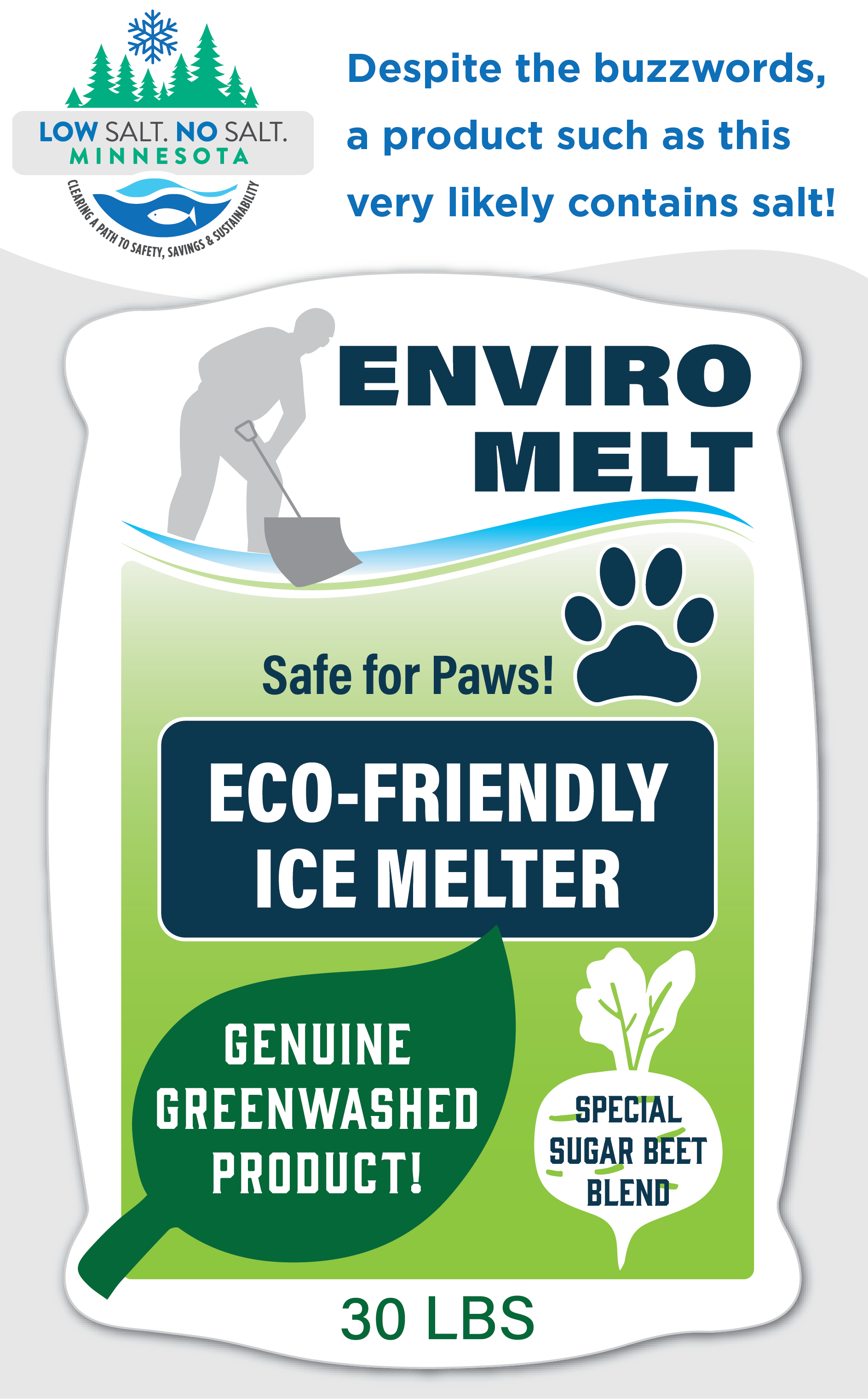It takes only one teaspoon of salt to permanently pollute five gallons of water. Once in the water, there is no feasible way to remove the chloride, according to the Minnesota Pollution Control Agency.
 Roseville residents and business owners are asked to evaluate their use of salts and other deicers this winter season and consider some alternatives to lessen the amount used and the impact on the environment. Communities and organizations across the Twin Cities are joining the movement called Low Salt. No Salt. Minnesota.
Roseville residents and business owners are asked to evaluate their use of salts and other deicers this winter season and consider some alternatives to lessen the amount used and the impact on the environment. Communities and organizations across the Twin Cities are joining the movement called Low Salt. No Salt. Minnesota.
The movement was started by a group of nearly 20 Twin Cities watershed organizations and distr icts, cities, Hennepin County and the Stop Over Salting Citizen Group, which have united as The Hennepin County Chloride Initiative. The initiative has received state funding from The Clean Water Land & Legacy Amendment.
icts, cities, Hennepin County and the Stop Over Salting Citizen Group, which have united as The Hennepin County Chloride Initiative. The initiative has received state funding from The Clean Water Land & Legacy Amendment.
Why should I reduce the use of deicers?
All deicers impact the environment. Salt is permanently accumulating in Minnesota’s water – in both groundwater and surfaces waters like lakes and streams. There is no practical way to remove salt from water.
Salt hurts pets and wildlife, changes soil structure, and damages infrastructure and vegetation.
Salt has contaminated groundwater in some areas of the state, and 75% of Minnesotans rely on groundwater for drinking water. Excess salt can affect the taste and healthfulness of drinking water. Thirty percent of Twin Cities wells have chloride concentrations that exceed the water quality standard.
What can I use instead of salt?
- Shovel: Reduce the build-up of ice on your property in the first place, by shoveling and plowing soon after snowfall to remove snow before ice forms. Remember to position the snow pile where it won’t melt and refreeze again on a sidewalk or driveway.
- Sand: Sand, grit or kitty litter are great alternatives to salt. Remember to sweep up these products after the ice melts to avoid polluting our lakes and streams with these substances.
- Scrape: Use tools to remove the ice mechanically.
- Sweep: If you do use salt, sweep up excess salt once the ice is melted and salt is lying on bare pavement. Dispose of the salt in the garbage or save it to use with the next storm.
- Set expectations: If you use a service for snow and ice removal, have a contract with your winter maintenance professional that includes clear maintenance expectations and requires proper documentation of conditions and activities.
Do I have to stop using deicers on my property?
The Low Salt No Salt approach supports property owners making decisions that will reduce the need for salt on their property while still maintaining safety. There are many practices already in use here in Minnesota that you can adapt for before, during, and after the winter season. You can reduce the need for deicing salts on your property at your own pace and comfort level.
- Information provided by The Hennepin County Chloride Initiative.